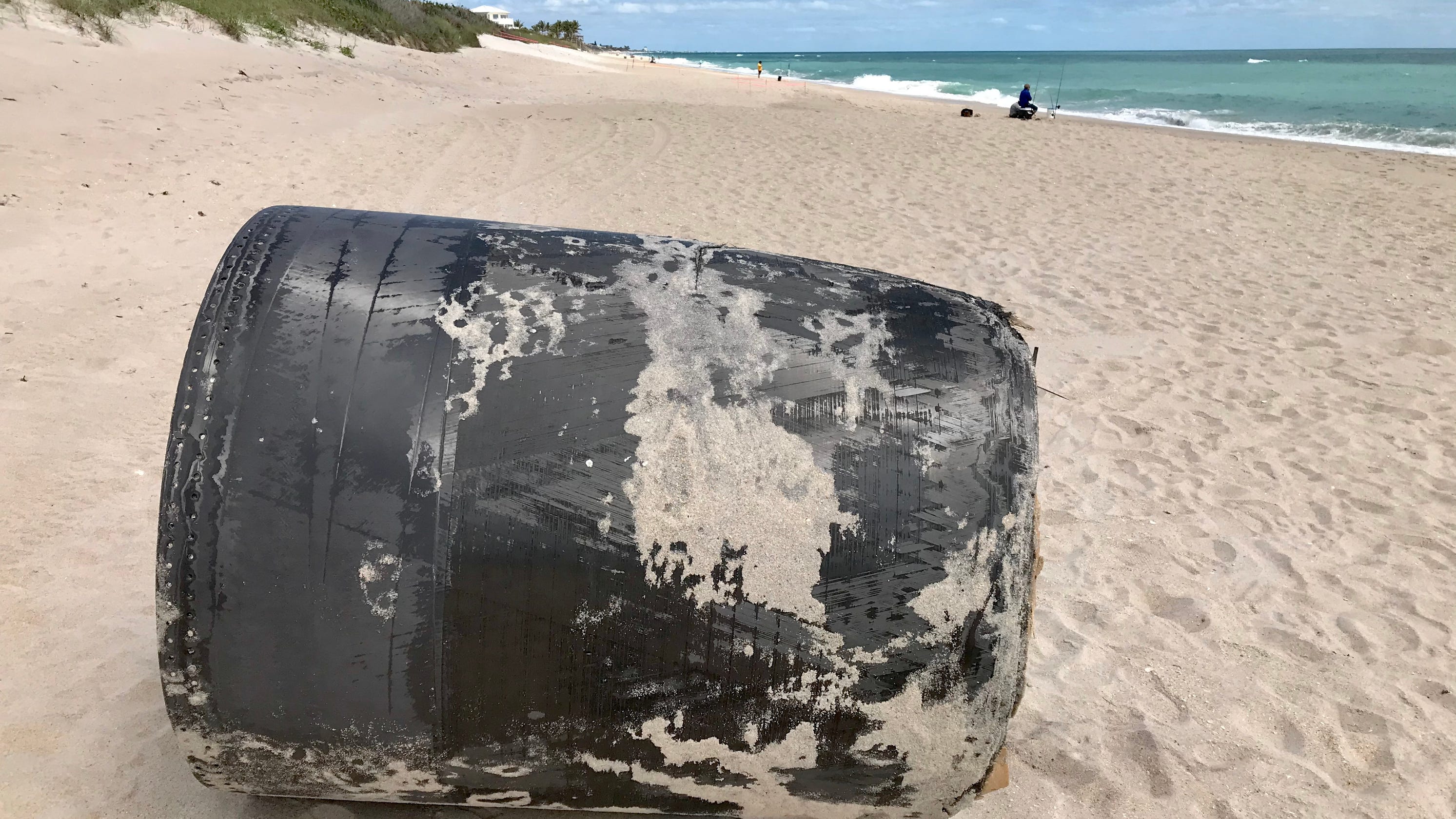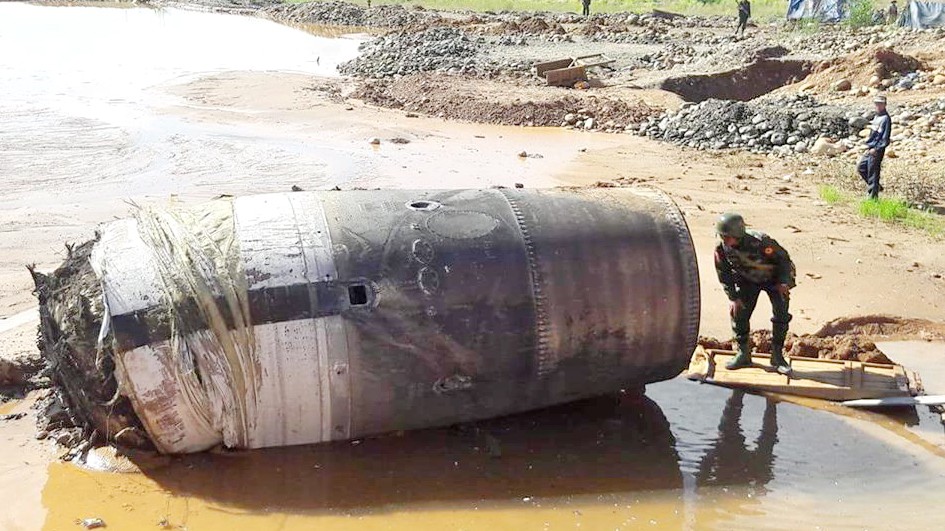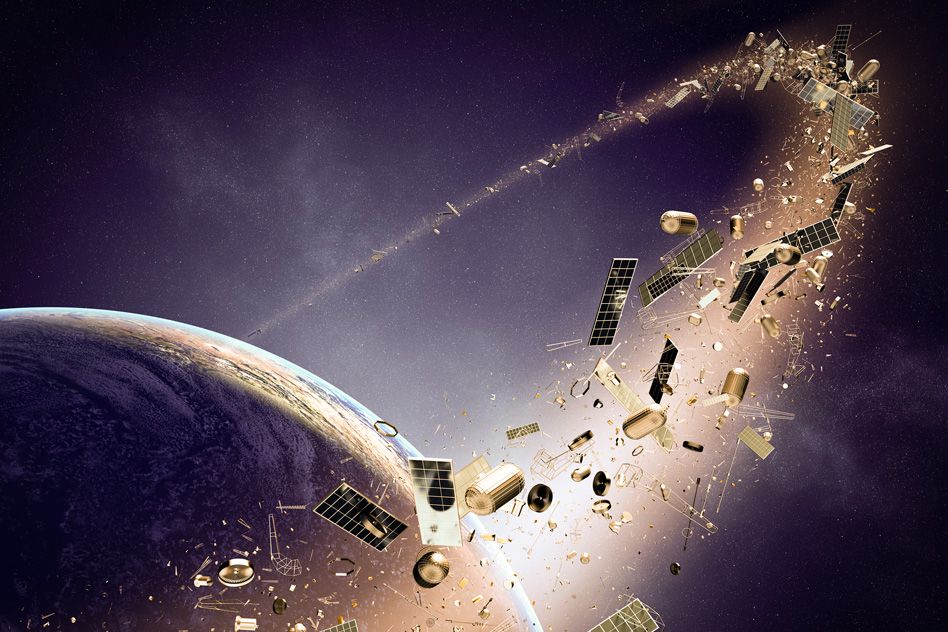
This metal cylinder was found on the shore of Western Australia.
A Massive, Mysterious Object
Washed Up on an Australian Beach
Roxanne Hoorn / AtlasObscura
(July 19 2023) — On Sunday, July 16, 2023, a hulking mystery object the size of a small car was dragged ashore by a curious couple in Western Australia. Greenhead, a town previously known for its wildflowers and pristine beaches, is now abuzz with an international mystery. Theories about the identity of the object have raged on the internet — from a piece of a passing ship, to a pressurized tank, to a part of Malaysia Airlines flight 370, which went missing over the Indian Ocean in 2014.
The encrusted object is now being held in a secure storage facility for further investigation. The Australian Space Agency subsequently tweeted: “The object could be from a foreign space launch vehicle and we are liaising with global counterparts who may be able to provide more information.”
European Space Agency engineer Andrea Boyd says experts now believe it is a piece of an engine from an Indian rocket, and could be up to 20 years old, according to an interview with the Australian Broadcasting Corporation. These rockets have been used in more than 50 missions since the 1990s. John Crassidis, a space junk expert at the University of Buffalo in New York, agrees with that conclusion. “I think that’s a pretty safe assumption at this point,” he says. “It didn’t seem like it had any burn marks, so it probably didn’t even hit space.”
A Reddit user posted side-by-side images to conclude that it came from the third stage of India’s Polar Satellite Launch Vehicle rocket system, though experts are hesitant to comment on that.
Some rocket launches fail and fall into the ocean. In successful launches, a variety of engines might be used to get a rocket into orbit, but are discarded before the craft reaches space. (No one can say yet which might apply to this case.) Typically this debris falls into the ocean, and should be retrieved by whoever launched it; the United Nations Office for Outer Space Affairs’ 1966 Outer Space Treaty dictates that every nation is responsible for its own space-related waste. But the treaty is rather outdated at this point, and it’s long been clear that not every country is picking up after itself. Much of the space junk that returns on Earth is unregulated, says Crassidis.
The bigger concern, according to Crassidis and a chorus of other experts, is the constantly multiplying mass of space debris that actually reaches orbit. NASA is currently tracking about 47,000 objects in the space around Earth. “And it’s growing,” says Crassidis.

A massive piece of space junk crashed to Earth in Myanmar.
This could eventually lead to a kind of orbit doomsday scenario, known as the Kessler Syndrome, proposed by NASA scientist Donald J. Kessler in the late 1970s. The more objects there are in orbit, the more likely collisions become. When objects collide they break into many more, sometimes untrackable, pieces, which can be moving at 17,000 miles per hour. Kessler worried that eventually Earth orbit will grow so clogged with space junk that it will be impossible to launch new satellites, which our financial, medical, and other communications systems depend on.
“If Kessler Syndrome comes true it’s game over,” says Crassidis. “And I think if we don’t do anything, easily in the next 50 years, we’ll probably be there.”
The Skylab space station plummeted to Earth in 1979,
When it comes to cleaning up orbit, “There’s lots of ideas to get rid of space junk,” he says, including harpooning it. “Unfortunately, nothing is feasible at this point, no matter what people say.” Crassidis is hopeful for a few futuristic methods, but they are at least 15 years off. “We gotta let today’s science fiction become a reality, and we need to buy that time.”
Back on Earth, Crassidis is less concerned. Launches typically drop their debris over oceans or sparsely populated areas. And most objects descending to Earth from orbit burn up as they pass through the atmosphere. Those that get through—such as Sputnik IV, which landed in Wisconsin, and Skylab, which scattered debris across rural Australia — such as aren’t much of a safety problem, statistically speaking. “Getting hit by lightning is orders of magnitude more likely than getting hit by a piece of space debris,” says Crassidis. “It just doesn’t happen very often.”

Usually, larger pieces of space debris, which are tracked, can be steered toward remote corners of the Pacific Ocean, sometimes known as the Spacecraft Cemetery. The depth’s haul includes many satellites, containers full of astronaut poop, and possibly most of Mir, the decommissioned Russian space station.
Moriba Jah, an aerospace engineer at the University of Texas, Austin, is concerned about what this growing collection represents. “I think it’s messed up,” he says. “It’s the status quo of space exploration.” Jah practices what he calls “space environmentalism and sustainability” through a lens of traditional ecological knowledge — and a long-term view. “The behaviors on land and ocean are being replicated in space,” he says, “and it’s going to be to our detriment.”
Posted in accordance with Title 17, Section 107, US Code, for noncommercial, educational purposes.